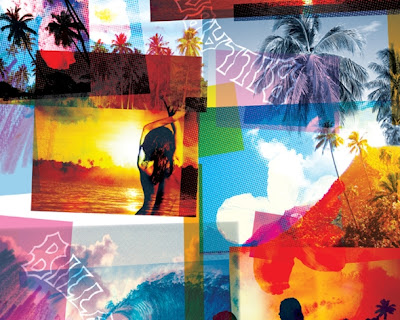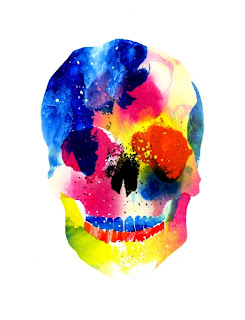Arts & Crafts Movement: 1880 - 1910
The Arts & Crafts movement originated in England and was instigated by the writer and artist William Morris. The movement advocated truth to materials and traditional craftsmanship using simple forms and often medieval, romantic or folk styles of decoration. It also proposed economic and social reform and has been seen as essentially anti-industrial. Both William Morris and Charles Rennie Mackintosh were strong influences on the Arts & Crafts Movement.
Sources:
http://www.charlesrenniemac.co.uk/
http://www.morrissociety.org/
http://en.wikipedia.org/wiki/Arts_and_Crafts_Movement
Folk Art: late 1800's - Today
Folk art encompasses art produced from an indigenous culture or by peasants or other laboring tradespeople. In contrast to fine art, folk art is primarily decorative rather than purely aesthetic. The nature of folk art is specific to its particular culture. The varied geographical and temporal prevalence and diversity of folk art make it difficult to describe as a whole, though some patterns have been demonstrated. It's difficult to track down well known folk artists at the time the movement began, however in today's society you can clearly see influences from this period of art. Some modern examples I've found include the Melbourne artist Beci Orpin and the UK artist Rob Ryan who creates beautiful paper cut artworks.
Sources:
www.beciorpin.comwww.misterrob.co.ukSurrealism: 1920'sSurrealist works feature the element of surprise, unexpected juxtapositions and non sequitur; however, many Surrealist artists and writers regard their work as an expression of the philosophical movement first and foremost, with the works being an artefact. Leader André Breton was explicit in his assertion that Surrealism was above all a revolutionary movement. Surrealism developed out of the Dada activities of World War I and the most important center of the movement was Paris. From the 1920s onward, the movement spread around the globe, eventually affecting the visual arts, literature, film and music of many countries and languages, as well as political thought and practice, philosophy and social theory. Two very influential artists during this time were Rene Magritte and Salvador Dali.
Sources:
http://en.wikipedia.org/wiki/René_Magritte
http://www.magritte.com/
http://en.wikipedia.org/wiki/Salvador_Dal%C3%AD
http://www.dali-gallery.com/
Space Art: 1920 - 1930
Space art is a general term for art emerging from knowledge and ideas associated with outer space, both as a source of inspiration and as a means for visualizing and promoting space travel. Whatever the stylistic path, the artist is generally attempting to communicate ideas somehow related to space, often including appreciation of the infinite variety and vastness which surrounds us. In some cases, artists who consider themselves space artists use more than illustration and painting to communicate scientific discoveries or works depicting space; a new breed of space artists work directly with space flight technology and scientists as an opportunity to expand the arts, humanities and cultural expression relative to space exploration. Some influential artists during this period were Lucien Rudaux and Chelsley Bonestell.
Sources:
http://en.wikipedia.org/wiki/Space_art
http://www.bonestell.org/
http://en.wikipedia.org/wiki/Lucien_Rudaux
http://iaaa.org/gallery/rudaux/
Fluxus: 1960's
Fluxus—a name taken from a Latin word meaning “to flow”—is an international network of artists, composers and designers noted for blending different artistic media and disciplines in the 1960s. They have been active in Neo-Dada noise music and visual art as well as literature, urban planning, architecture, and design. Fluxus is sometimes described as intermedia. Amazingly Yoko Ono was a member of the Fluxus movement, and another influential artist was called Ay-O and he created artwork called the Tactile Box.
Sources:
http://en.wikipedia.org/wiki/Fluxus
http://en.wikipedia.org/wiki/Ay-O
http://en.wikipedia.org/wiki/Yoko_Ono
Minimalism: 1960's - 1970's
Minimalism describes movements in various forms of art and design, especially visual art and music, where the work is stripped down to its most fundamental features. As a specific movement in the arts it is identified with developments in post-World War II Western Art, most strongly with American visual arts in the late 1960s and early 1970s. The term minimalism is also used to describe a trend in design and architecture where in the subject is reduced to its necessary elements. Minimalist design has been highly influenced by Japanese traditional design and architecture. In addition, the work of De Stijl artists is a major source of reference for this kind of work. De Stijl expanded the ideas that could be expressed by using basic elements such as lines and planes organized in very particular manners. Frank Stella was a significant figure in the minimalist movement. As De Stijl was a heavy influence on the minimalism movement, I have included Mondrian’s work.
Sources:
http://en.wikipedia.org/wiki/Piet_Mondrian
http://www.frankstella.net/
Deconstructivism: 1980's
Deconstructivism is a development of postmodern architecture that began in the late 1980s. It is characterized by ideas of fragmentation, an interest in manipulating ideas of a structure’s surface or skin, non-rectilinear shapes which serve to distort and dislocate some of the elements of architecture, such as structure and envelope. The finished visual appearance of buildings that exhibit the many deconstructivist “styles” is characterized by a stimulating unpredictability and a controlled chaos. A more modern and current artist that I believe represents this period of art is called Viktor Timofeev.
Sources:
http://www.viktortimofeev.com/
Pixel Art: 1972 - Today
Pixel art is a form of digital art, created through the use of raster graphics software, where images are edited on the pixel level. Graphics in most old (or relatively limited) computer and video games, graphing calculator games, and many mobile phone games are mostly pixel art. The pixel art movement kicked off after Richard Shoup developed the Super Paint System by Xerox in 1972 at the Palo Alto Research Centre.
Pixel art has particularly inspired street artists across the world including "Space Invader" the French street artist whose name comes from the 80's game that pixel art is heavily influenced from. Another street artist whose installations can be seen in New York City is Kelly Goeller, and in 2008 she installed a piece called "Pixel Pour"
Sources:
http://laughingsquid.com/pixel-pour-by-kelly-goeller/
http://en.wikipedia.org/wiki/Invader_(artist)
YouTube Video of Bomb IT - Street Artist Space Invader
http://www.youtube.com/watch?v=qPbIs40rxmQ
Hyperrealism: Early 2000's - Today
Hyperrealism is a genre of painting and sculpture resembling a high-resolution photograph. Hyperrealism is a fully fledged school of art and can be considered an advancement of Photorealism by the methods used to create the resulting paintings or sculptures. The term is primarily applied to an independent art movement and art style in the United States and Europe that has developed since the early 2000s. Patricia Piccinini creates unusual yet intimate and intriguing sculptures that plays with the adult's ability to access their childlike thoughts and ideas. Ron Mueck also creates these highly realistic sculptures, however he plays with scale and shock imagery.
http://www.abc.net.au/rn/artworks/galleries/2010/2807818/
Next Post - Images!











































